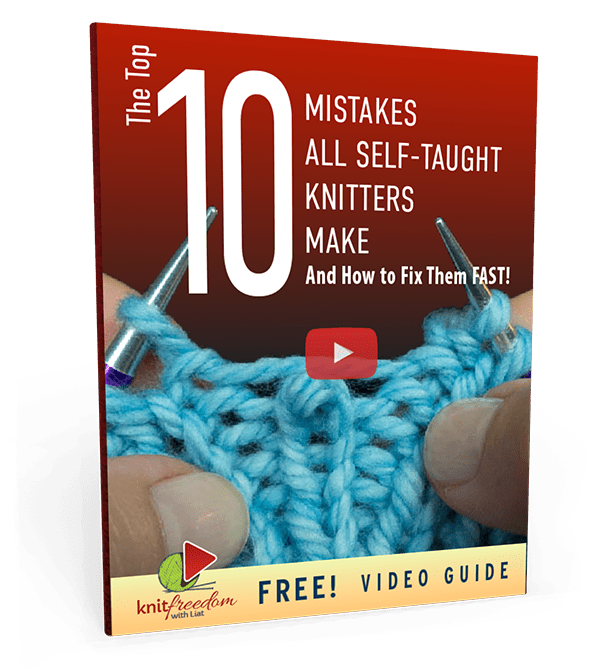Basic Short-Tail Cast-Ons
Backwards Loop (Child’s) Cast-On

The Backwards Loop Cast-On is the easiest of them all.
It’s great for teaching to children and beginning knitters. However, it’s not very sturdy or stretchy, and it’s also difficult to knit into.
The stitches act like a Chinese finger trap and tighten as you knit each one – not very desirable.
Learn this cast-on so you can teach it to your kids and your beginning-knitter friends, then learn a better short-tail cast-on as soon as possible.
Restricted Video
 This video is available to members of Knitting Superstar University or the following classes:
This video is available to members of Knitting Superstar University or the following classes:
If you own this class, please LOG IN to watch.
Double-Twist Loop Cast-On
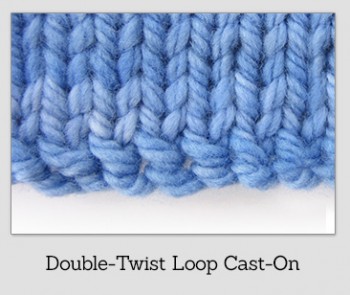
The Double-Twist Loop Cast-On is an attractive short-tail cast-on that is relatively fast to do.
It has a sturdy double-twisted edge and, like all short-tail cast-ons, it can be used to add stitches in the middle of any project.
Restricted Video
 This video is available to members of Knitting Superstar University or the following classes:
This video is available to members of Knitting Superstar University or the following classes:
If you own this class, please LOG IN to watch.
Knitted Cast-On

The Knitted Cast-On is a very easy short-tail cast-on based on the knit stitch. It is moderately stretchy and only semi-durable- it tends to get stretched-out with use.
Avoid using this cast-on on high-wear items like kids’ hat brims or mitten cuffs.
Restricted Video
 This video is available to members of Knitting Superstar University or the following classes:
This video is available to members of Knitting Superstar University or the following classes:
If you own this class, please LOG IN to watch.
To Do the Knitted Cast-On:
1. Knit into stitch on the left-hand needle and then place the new stitch knitwise onto the left-hand needle.
2. Repeat for as many stitches needed to cast on.
Tips:
1. If you are using the knitted cast-on to add stitches in the middle of a project, you won’t need to turn your work after you’ve cast on- just start knitting the cast-on stitches.
2. Knit the cast-on stitches through the back loops to ensure a nice solid edge.
Purled Cast-On
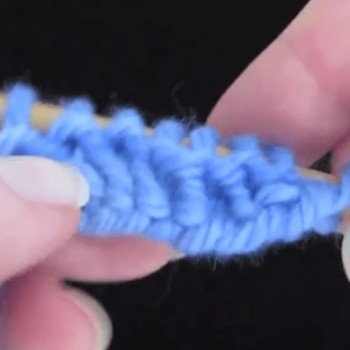
The Purled Cast-On is the exact opposite of the Knitted Cast-On and is used to add stitches when you’re on the purl side of your work.
It looks exactly the same as the knitted cast-on, only viewed from the back.
Restricted Video
 This video is available to members of Knitting Superstar University or the following classes:
This video is available to members of Knitting Superstar University or the following classes:
If you own this class, please LOG IN to watch.
To Do the Purled Cast-On:
1. Purl into stitch on the left-hand needle and then place the new stitch purlwise on the left-hand needle.
Tips:
- If you are using the purled cast-on to add stitches in the middle of a project, you won’t need to turn your work after you’ve cast on – just start purling the cast-on stitches.
- Purl the cast-on stitches through the back loops to ensure a nice solid edge.
More Info:
The nice thing about the purled cast-on is that when you place the new stitch on the left-hand needle, your needles are already in position to purl again, so you don’t have to reinsert your needle.
Cable Cast-On
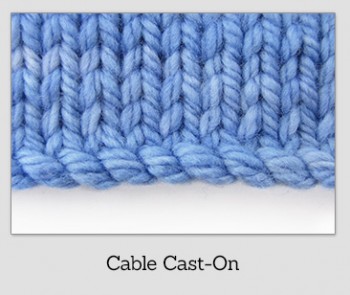
The Cable Cast-On is just as easy as the knitted cast-on but has a beautiful and firm twisted edge.
The edge is not very elastic but it is quite sturdy, so you can use it for projects where the edge needs to be decorative but not highly stretchy.
I recommend this short-tail cast-on for adding stitches in the middle of a project.
To Do the Cable Cast-On:
- Insert the right-hand needle between the first two stitches on the left-hand needle and wrap your yarn as if to knit.
- Pull a loop through and place the new stitch knitwise on the left-hand needle.
Tips:
- To make the last cast-on stitch look just as good as the rest of them, bring your yarn between your needle tips to the front of your work after creating the last stitch but before placing it on the left-hand needle. Then bring your yarn to the back, under the right-hand needle, and you’ll see how it neatens up the last stitch.
- If you are using the Cable Cast-On to add stitches in the middle of a project, you won’t need to turn your work after you’ve cast on- just start knitting into the cast-on stitches.
Chain (Crochet) Cast-On
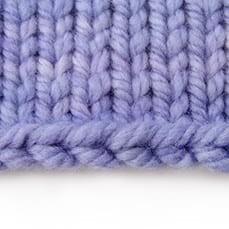
The special thing about the chain cast-on is that it’s the only cast-on that exactly matches the Standard Bind-Off, so you can use it to create perfectly matching cast-on and bind-off edges.
However, because it creates a rather obvious edge, this wouldn’t be a great choice for adding stitches in the middle of a project.
Restricted Video
 This video is available to members of Knitting Superstar University or the following classes:
This video is available to members of Knitting Superstar University or the following classes:
If you own this class, please LOG IN to watch.

